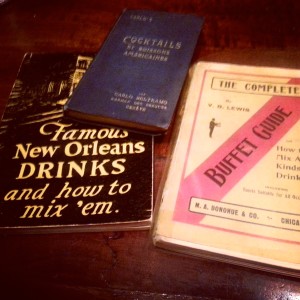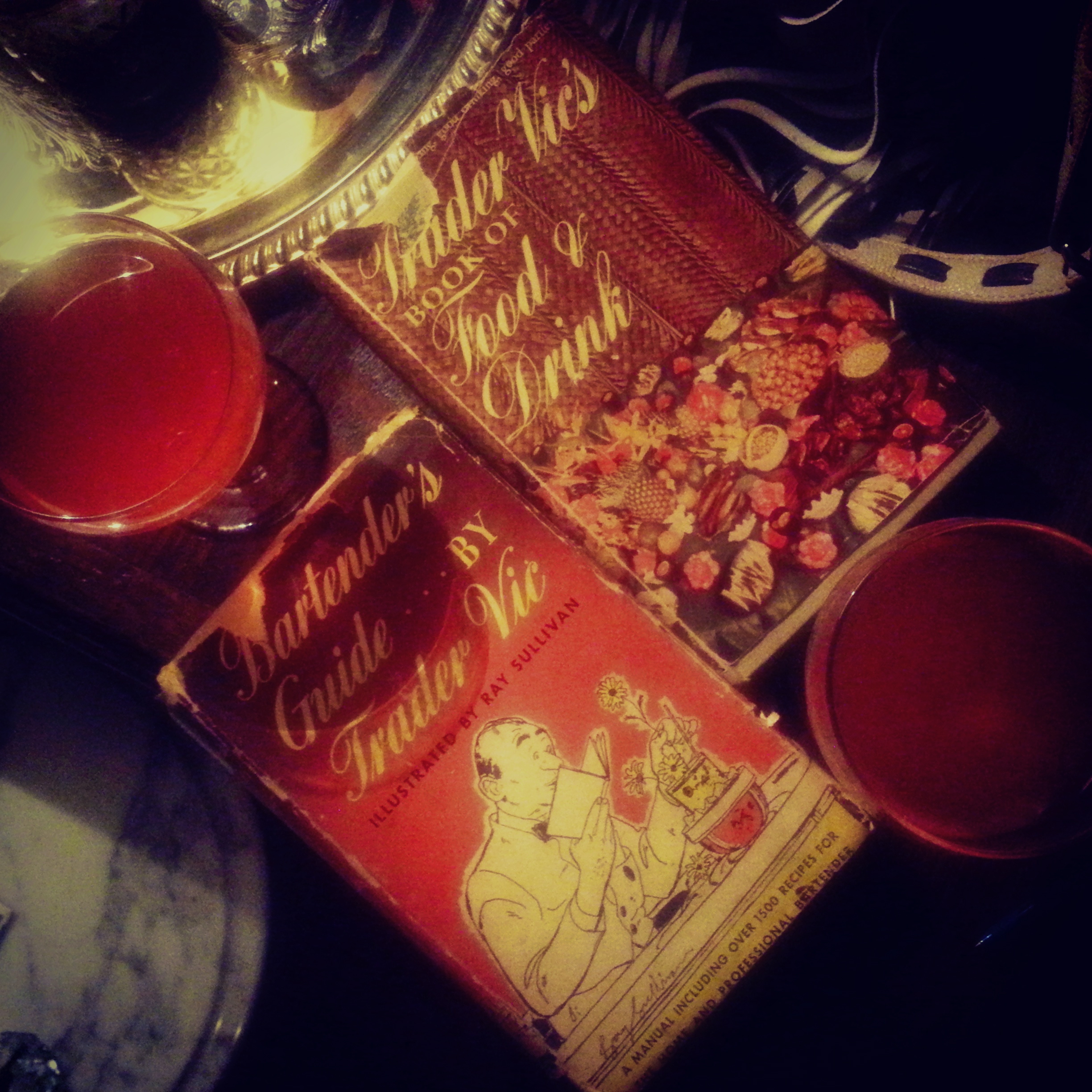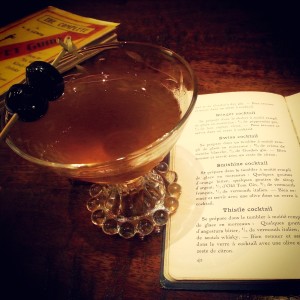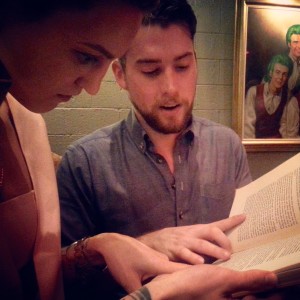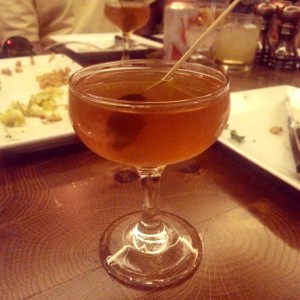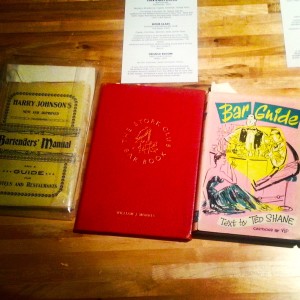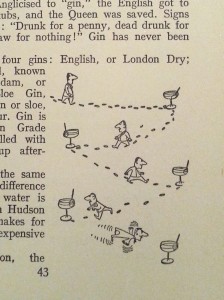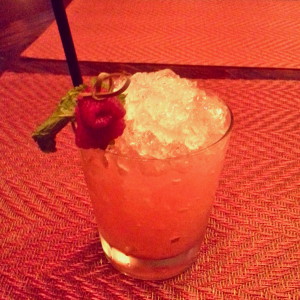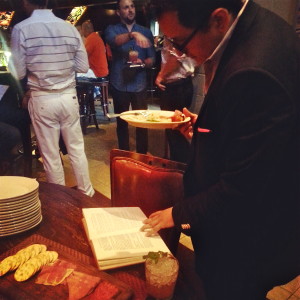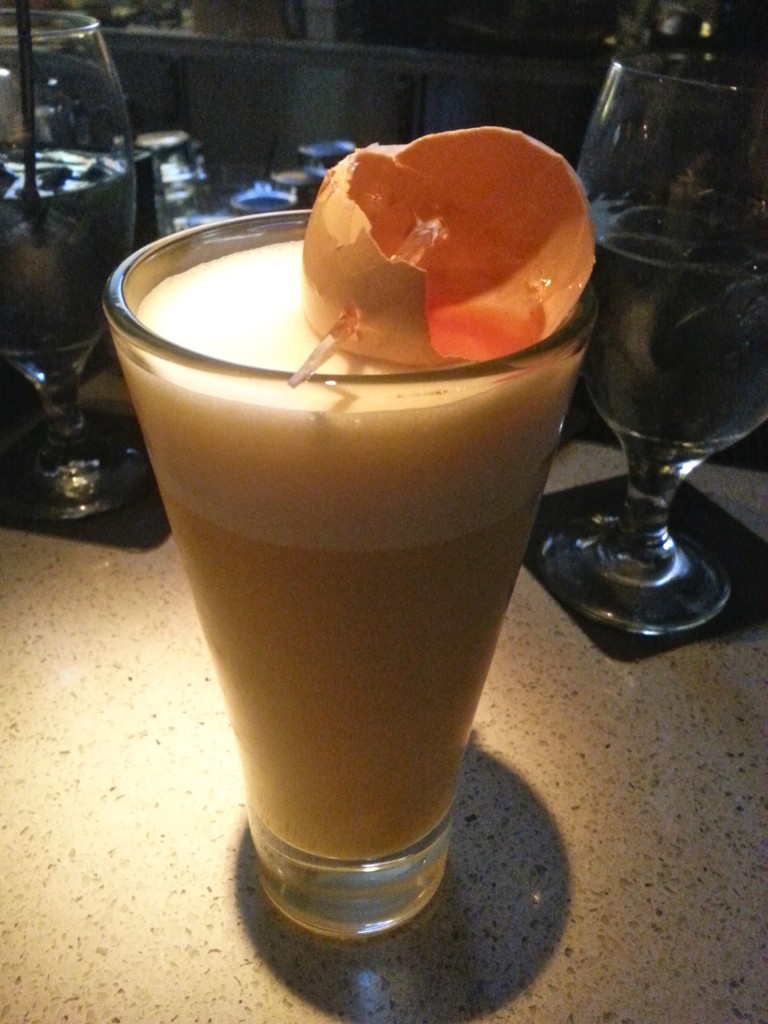
It was the best of times, it was the thirst of times, and 2014’s constantly unfolding craft-cocktail kaleidoscope unfurled a spirited array of events for DFW’s imbiberati. Here’s a look back at the year’s top stories:
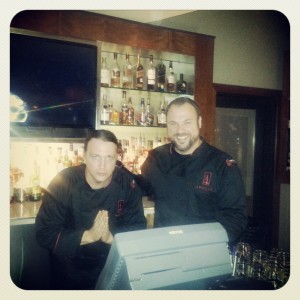
JANUARY: Eddie “Lucky” Campbell and Michael Martensen together behind the bar at Abacus
From darkness, light: For a brief but glorious time, the chaos set in motion by Eddie “Lucky” Campbell’s displacement from the late Chesterfield and Michael Martensen’s abrupt exit, along with his bar team, from Bar Smyth and The Cedars Social actually set the stage for two of the city’s most talented and influential bar men to pair up behind the bar at Abacus. The two have a longstanding rivalry – “I’m Seabiscuit and he’s War Admiral,” Campbell once told me. “I’m hard working, and he’s a fucking genetic miracle” – that continued to unfold at Abacus to customers’ benefit, especially late, once the kitchen had closed. One evening we rolled in and the two went back and forth like b-boys, throwing down cocktail creations to put each other’s to shame until Martensen slipped off to a corner to focus on a bit of handiwork. “What’s he doing over there?” Campbell wondered with his sly smile. Martensen emerged with what you see at top: A frothy apple boilermaker made with Deep Ellum Blonde, Cointreau, apple brandy, whole egg and a hollowed-out half-eggshell cupping a whiskey shot. Boss.

MAY: Mate Hartai says goodbye to The Libertine Bar
For years, Hartai — chief barman at Remedy, opening tonight –was synonymous with the Libertine, which he helped transform from solid neighborhood bar to a den of craft-cocktail prowess and innovation. But after five years at the Libertine, Hartai decided it was finally time to move on to other things – namely The Cold Standard, the craft ice business he’s been shaping for some time – and most recently, Remedy, the new Lower Greenville project from HG Sply owner Elias Pope.

JULY: Texas Tiki Throwdown at Tales of the Cocktail, New Orleans
The DFW presence at the spirit industry’s biggest annual gathering has gotten larger and larger, with dozens of bartenders and spirit reps on hand for 2014’s event. Among the festival’s kickoff happenings was the Texas Tiki Throwdown, where DFW drink-slingers went mano-a-mano with others from Houston, Austin and San Antonio. It’s fair to say everyone left the conference room with Lone Stars in their eyes.
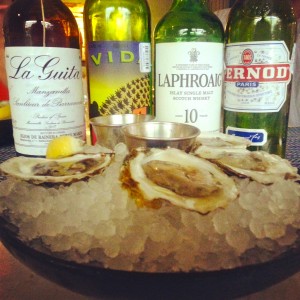
JULY: Driftwood introduces an oyster shooter flight
They say the world is your oyster, but sometimes oysters are your world: This little bit of brilliance from Oak Cliff’s disappointingly defunct seafood establishment briefly brightened up my existence. Four oysters on the half-shell, each shell filled upon consumption with one of four spirits or liqueurs: Manzanilla sherry, mezcal, single malt whiskey and Pernod. Let bivalves be bivalves!

AUGUST: Hendricks Gin’s Kanaracuni unveiling
Dallas was one of a handful of cities this summer in which Hendricks Gin chosed to unveil its rare Kanaracuni gin, a single-batch production made from a plant culled from the Venezuelan rainforest. Hendricks knows how to put on an event, and the fancifully exotic tasting, conducted at the Dallas Zoo, did not disappoint: Bordering on elaborate fantasy, it featured tales of adventure and large insects and finally samples of the amazing kumquat-flavored gin, which in intentionally ephemeral fashion shall never be seen again.
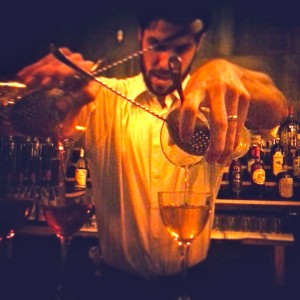
AUGUST: Parliament and Proof + Pantry open
As noted above, Lucky Campbell and Michael Martensen’s longstanding rivalry can occasionally reach ridiculous proportions, so it was only logical that their two long-awaited projects would open on the same night — Parliament in Uptown, and Proof + Pantry in the Arts District. (“How ridiculous is that?” Campbell told me a couple of nights before the big event.) Both have met expectations, garnering local and national acclaim.
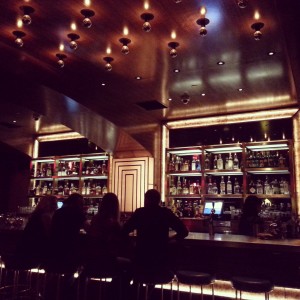
OCTOBER: Midnight Rambler opens
Behind their Cuffs and Buttons consulting enterprise, cocktail masters Chad Solomon and Christy Pope have long been influences in DFW’s drinking scene, but it wasn’t until this fall that Midnight Rambler, the bar the two have long dreamed of opening, launched at the Joule Hotel. The swanky subterranean palace and its lineup of well-conceived libations take the city to another level, marking another step in its craft-cocktail evolution.
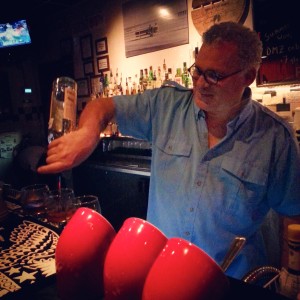
NOVEMBER: Charlie Papaceno leaves the Windmill Lounge
After nine years at the landmark lounge he co-founded with Louise Owens, Papaceno left the venerable dive spot to pursue plans to open a new bar in Dallas’ Cedars neighborhood. One of the scene’s elder statesmen, Papaceno’s bespectacled mug was a steady presence behind the bar at Windmill, which became an early haven for Dallas’ budding craft-bartender scene and went on to garner national attention – including a nod as one of Esquire’s best American bars.

DECEMBER: Trigger’s Toys annual benefit event featuring five pop-up bars
I was crushed to miss this epic event, which made use of the long-unused warren of space at recently opened Henry’s Majestic in the Knox-Henderson area. Five pop-up bars featuring teams of bartenders from DFW and beyond went all out to raise money for a Dallas charity serving hospitalized kids. From sports bar and tiki bar to country saloon and nightclub, it was a raucous party that garnered $100,000 for the cause.
ONGOING: Collectif 1806’s bartender book club events
The bartender education and support arm of Remy Cointreau USA, helmed locally by Emily Perkins, has helped remind that the whole craft-cocktail thing is less revolution than revival. At its periodic exclusive book club gatherings, bartenders page through some of Cointreau’s extensive collection of vintage cocktail tomes, perusing recipes and gleaning old knowledge and then passing the reaped benefits along to consumers. Everybody wins.
